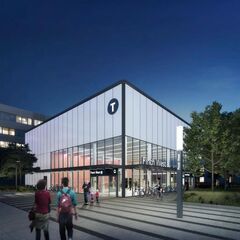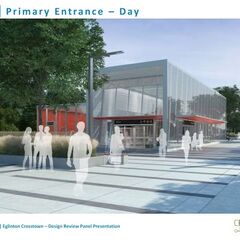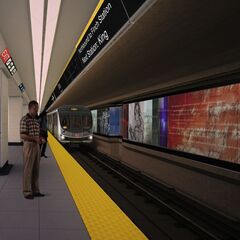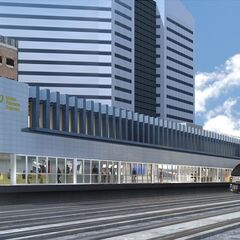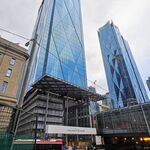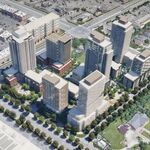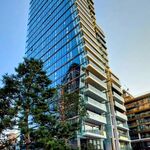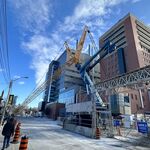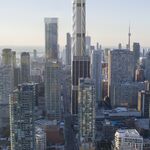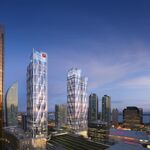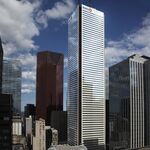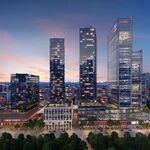After a 10-month election campaign of transit promises—from "Subways, Subways, Subways" to SmartTrack to express buses and LRT—you might be forgiven for thinking transit talk had become a populist joke. But with Toronto and the GTA in a serious transportation struggle, it's no laughing matter. Transit and transportation problems continue to plague our city and the greater region with overcrowded buses, streetcars and subways, overloaded highways and over-stressed travelers. The collective cost to our regional economy is an estimated $6-billion annually and countless hours of lost time.
An additional 60 million new annual rides projected by 2018 on the Toronto Transit Commission (TTC) means improvements need to be implemented now. The Amalgamated Transit Union's (ATU) new report, Toronto's Transit Future, sets the course for enhancing the system to respond to the growing number of TTC riders being spawned from demographic and economic changes. ATU's Toronto's Transit Future shares and builds upon many of the ideas put forward in a August 2014 TTC report on improving service. Between them, three main themes are evident: Service Expansion, System Enhancements and Budgetary Possibilities.
For the ATU, service expansion is about both new rapid transit lines and building upon what our current network can already do. The ATU plan endorses and enhances 7 new rapid transit lines. The Finch West LRT should be completed and extended both east to Yonge Street's Finch Subway Station on Line 1, and west to Pearson International Airport, ultimately serving as a rapid transit anchor for future development on the route. Under the ATU plan, Pearson is also served by completion of the original Crosstown LRT alignment, westward to the Airport, serving airline users and the second largest employment node in the GTHA. These two services would augment the nearly-complete but more expensive Union Pearson Express and link up with the MiWay/GO Transit Mississauga Transitway.
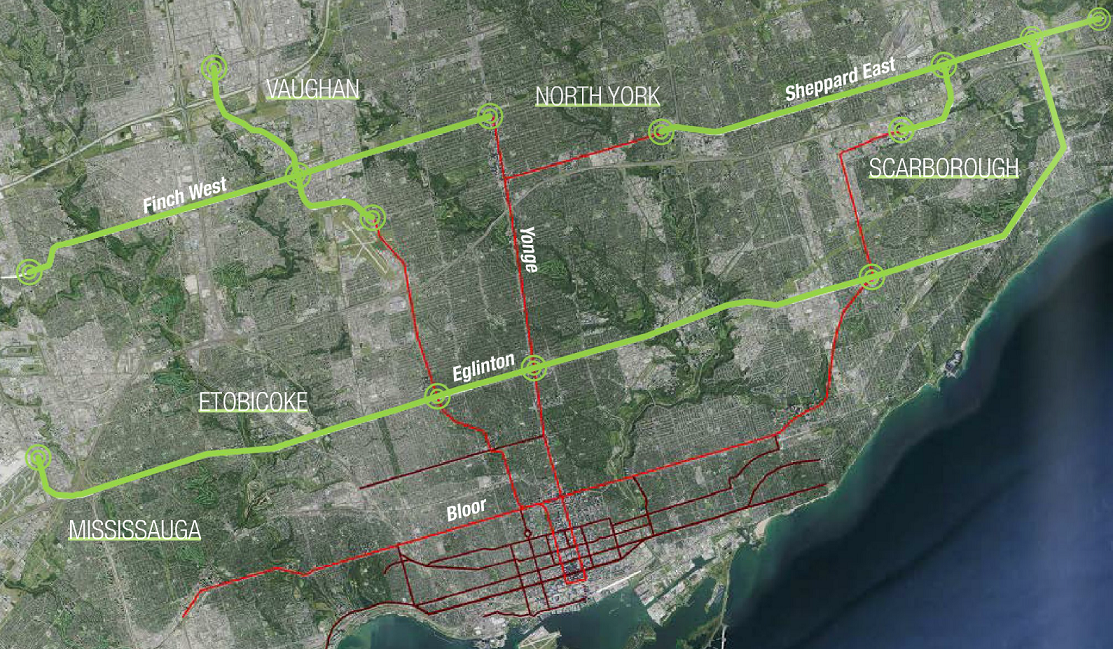 ATU endorsement and expansion of LRT Transit solutions, image courtesy of ATU Local 113
ATU endorsement and expansion of LRT Transit solutions, image courtesy of ATU Local 113
In Toronto's east end the ATU is calling for the completion of the Sheppard East LRT and a connection to the University of Toronto Scarborough campus to serve this critical transit node. Rather than declaring which mode—RT or Subway—unilaterally to replace the increasingly decrepit 1985 SRT, the ATU plan calls for a careful cost-benefit comparison of the proposed subway and LRT plans once the needed Environmental Assessments are completed for the Subway proposal. In addition, Toronto's Transit Future calls attention to constructing the Scarborough-Marlvern LRT line as a possible line to provide additional transit relief to Scarborough riders. The line would follow Eglinton Avenue East, Kingston Road and Morningside Avenue, connecting Kennedy Station with the Sheppard East LRT.
SmartTrack and the Downtown Relief Line are also endorsed as critical links to relieve subway crowding and expand rapid transit access. The politically ignored Waterfront East LRT is also included for its important capacity to provide the burgeoning eastern waterfront and future Port Lands communities with affordable rapid transit access.
While long-term expensive rapid transit expansion projects like these are undoubtedly needed, the ATU joins the TTC in calling for these practical short-to-medium term solutions to expand service on the network we have.
- Expanding the Ten-Minute-Or-Better network would provide new routes with more frequent service all day long adding 1.8 million new trips per year at a projected cost of $10 million.
- Reduce crowding and wait times by returning to 2008 Vehicle Loading Standards would attract 3.7 million new rides at a cost of $11.5 million.
- Expanding the well-used Blue Night Network would attract 300,000 new rides and cost $2.3 million.
- Returning to running all routes all day long would add 1.0 million new rides at a cost of $4.6 million.
- Accelerating construction of the approved $181 million McNicoll Bus Garage to support these enhanced services and the need for new buses.
- Purchasing and retrofitting of additional vehicles beyond the current plan to make up for future shortfalls between the service required and the number of vehicles available, at a cost of several millions of dollars.
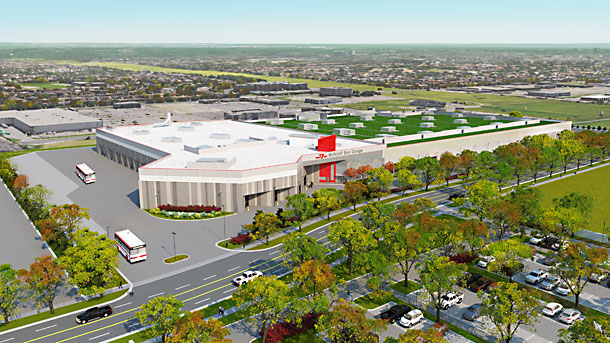 Proposed McNicoll Bus Garage, image courtesy of TTC
Proposed McNicoll Bus Garage, image courtesy of TTC
In addition to these practical upgrades to service levels, the ATU notes enhancements to the systems and operations that make the TTC run today are a key part of delivering good public transit, including technological and operational paradigm shifts. The first three proposals below echo the TTC report while the rest are improvements beyond that.
- All-Door Boarding on the busy bus and streetcar routes to speed up passenger loading and journey times at little to no additional cost with enhanced fare enforcement.
- Switching to a Time-Based 2-Hour transfer for unlimited riding at a cost of $20 million would attract 2.16 million new rides.
- Transit Priority Signals and Bus Queue Jump Lanes would provide TTC vehicles with congestion relief and traffic light priority to enhance trip speeds and reliability at potentially no extra cost when net savings in additional labour and vehicle costs are factored in.
- Headway-based Service Management would run vehicles in timed intervals versus the current rigid clock-face based schedule, to produce more evenly spaced and reliable transit.
- Traffic Management plan to restrict left turning vehicle movement which block streetcars and heavy enforcement and expansion of no-parking zones to keep traffic moving on busy streets.
- Better partnerships with car-share and bike-share agencies to create seamless transportation experiences across the TTC network of stations and facilities.
- Leasing bus garage space from the recently vacated York Region Transit garage to temporarily fill the gap while McNicoll Bus Garage is completed.
- Re-branding the 192 Airport Rocket Bus for better visibility in partnership with Pearson Airport including an enhanced terminal bus loading zone and vehicle WiFi for a better passenger experience.
- Accelerating Station Accessibility retrofits to relieve pressure on TTC's Wheel-Trans service and broaden the reach of the conventional system.
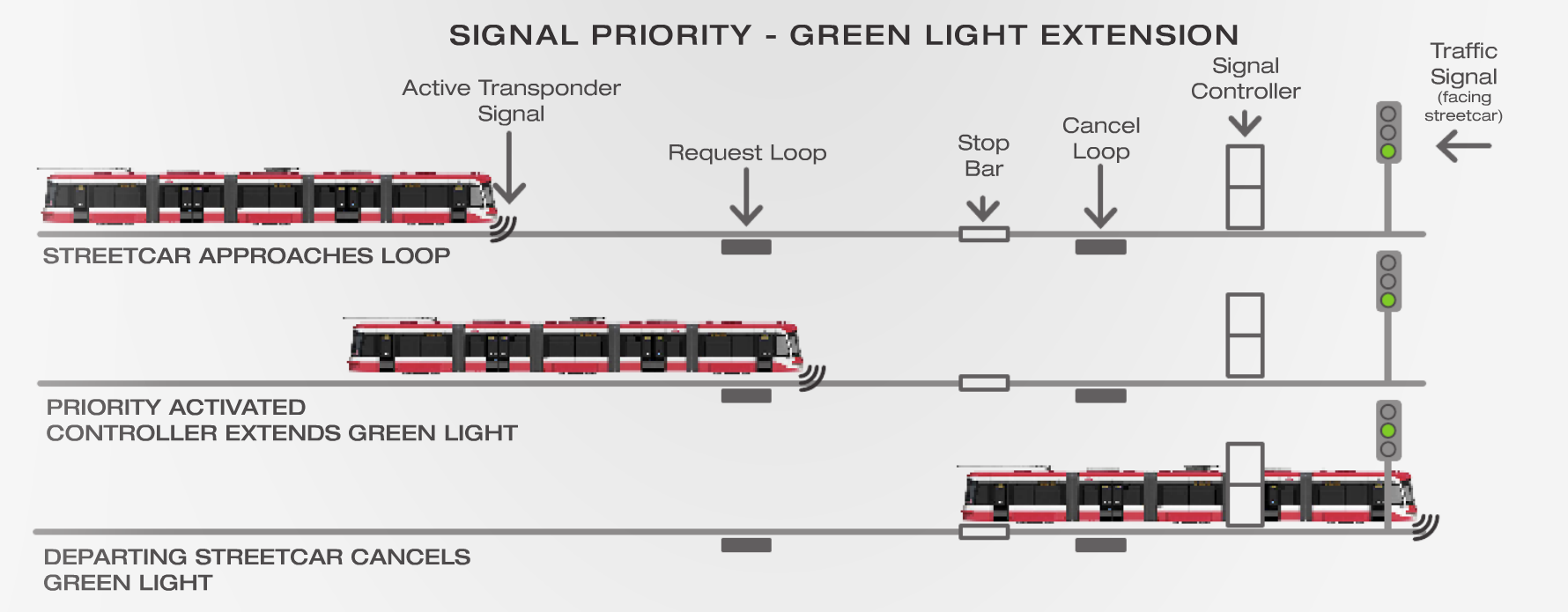 How Transit Priority Signals work, image courtesy of ATU Local 113
How Transit Priority Signals work, image courtesy of ATU Local 113
Implementation of these above proposals and myriad others included in the ATU's report would go a long way to restoring the TTC to its former status as a service admired worldwide for its efficiency and comprehensiveness. Yet, budgetary pressures continue to starve the system and are continually cited as serious constraints to improving the system. With a per-ride subsidy of just 0.79¢ per ride (lower than Montreal, Boston, New York or L.A.) the TTC is a prudent user of the public subsidy given to it and one of the most efficient systems in the world. Indeed ongoing and renewed measures to find further 'efficiencies' have yielded some cost savings in several areas of the organization, but only at the cost of service cuts and near-status quo system expansion results. The ATU plan for budgetary relief includes the items below.
- Redirecting Wheel-Trans riders to a more accessible system (proposed above) yielding a nearly $35 per-ride decrease in the needed subsidy for accessible trips. Up to 4.39 million Wheel-Trans Rides are expected in 2018.
- Stopping fare freezes which can cost the TTC $25-$38 million annually in lost revenue in perpetuity and introduce predictable and equitable small fare increases.
- Introduction of low-income Metropass to assist those under financial pressure at a yearly cost of $16 million.
- Call on the Provincial government to return to partly funding transit agency operational costs.
- Advocating vigorously during the 2015 Federal Election and beyond for the establishment of a National Transit Strategy with a federal funding commitment beyond the inadequate gas-tax allocation.
Below is the ATU's promotional and explainer video for this report.
The ATU report, like many others released in recent years, echos a collective alarm that Toronto's transit badly needs investment and transformation now if we are to keep up with our population growth and remain one of the most competitive cities in the world for business. Anything less will only deteriorate our transit even further and continue a disappointing history of blasé policy toward a vital organ of the city.
As with all transit news in the GTHA Urban Toronto will keep a watchful eye on all of our regions transit developments. Join our transit and transportation Forum discussions here and through the links below to join the growing conversation or leave a comment below and let us know what you think about these latest proposals.

 1.5K
1.5K 



